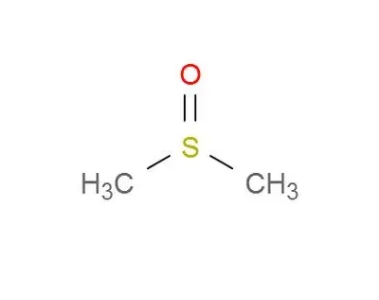Dimethyl sulfoxide DMSO solvent
Dimethyl sulfoxide (DMSO) is a widely used solvent that is miscible with water and a variety of organic solvents. It goes by several names, including methylsulfoxide, sulfinyl dimethane and dozens of trade names.
DMSO was first discovered in the late 19th century as a byproduct of the craft paper process used to make paper from wood pulp. Around the same time, Russian chemist AlexanderZaytsev synthesized it by oxidizing dimethyl sulfide, another byproduct of the craft paper process. The synthesis of Zaytsev was the basis for the manufacturing process still in use today.
DMSO is a laboratory and industrial solvent for many gases, synthetic fibers, paints, hydrocarbons, salts, and natural products. Because it is aprotic, relatively inert, non-toxic, and stable at high temperatures, it is a common solvent for chemical reactions. Its deuterated form is an ideal solvent for nuclear magnetic resonance spectroscopy.

In the 1960s, scientists observed that DMSO penetrated human skin with little effect on tissue; And the solvent was tested as a way to get drugs into the body, as an alternative to oral formulations or injections. Since then, DMSO has been used in some transdermal drug delivery systems (i.e., patches). In 1978, the U.S. Food and Drug Administration approved its use to relieve symptoms of chronic interstitial cystitis (painful bladder syndrome) – the only drug the FDA approved DMSO as an actual drug.
As one might expect in the 1960s, DMSO was tried as an alternative to relieve inflammation and as a solvent to introduce illicit drugs like cocaine into the body. It has also been falsely touted as a cancer cure. In 1965, the U.S. Food and Drug Administration (FDA) banned the use of DMSO in clinical trials because the compound altered the refractive index of the lenses of experimental animals’ eyeglasses. The ban was lifted in 1980 after intense interest in the substance waned.
Researchers continue to look at DMSO as a possible treatment. In 2016, GeraldKrystal and colleagues at the British Columbia Cancer Agency (Vancouver), the University of British Columbia (Vancouver), and Vancouver General Hospital reported that DMSO inhibits the production of inflammatory cytokines in human blood cells, thereby reducing autoimmune arthritis. The authors also investigated whether DMSO had any anticancer activity; They concluded that they could not confirm that this was the case.
Dimethyl sulfoxide hazard information
Hazard level * GHS code and hazard Statement
Flammable liquids, Class 4 H227 – Flammable liquids
* Globally Harmonized System of Classification and Labelling of Chemicals (GHS).
Molecules of the future
The CRISPR-Cas9 genome-editing system, which won the 2020 Nobel Prize in chemistry for Emmanuelle Echarpentier and JenniferDoudna, has revolutionized biology; But it’s not as effective as it might be. It inserts a new piece of DNA at the target site of the cell’s existing DNA less than 20 percent of the time, which is usually because the cell repairs the break before the insertion is complete.
As reported at the ACS National meeting last month, LindseyJames* and CarolineFoley of the University of North Carolina at Chapel Hill are looking for molecules that block the action of proteins that promote rapid DNA repair. The researchers started with a bromobenzamide derivative, UNC21701 (shown); It showed some promise, but its low affinity for the protein p53-binding protein 1 (53BP1) made it only a partial solution.

